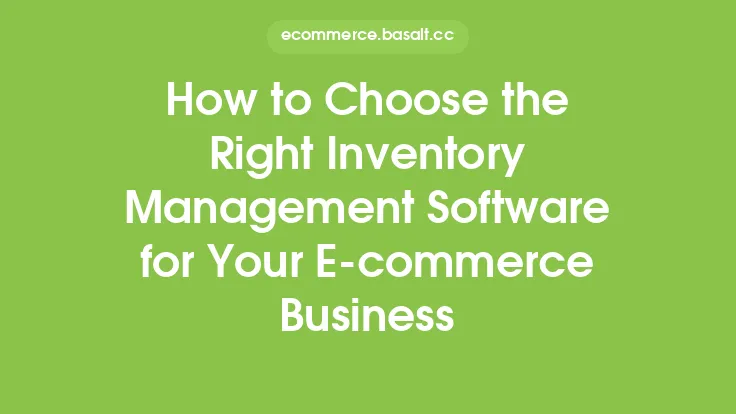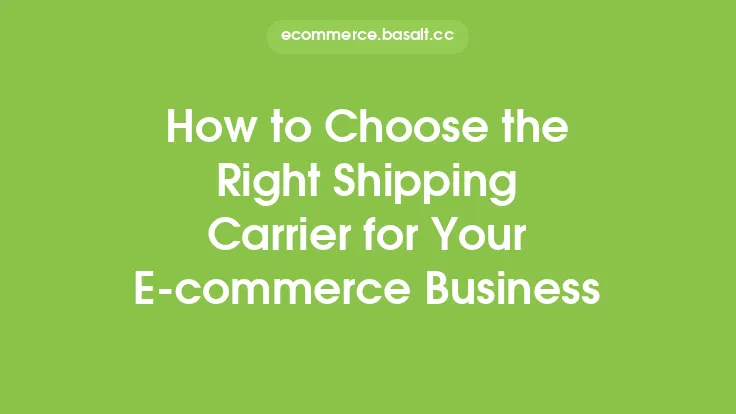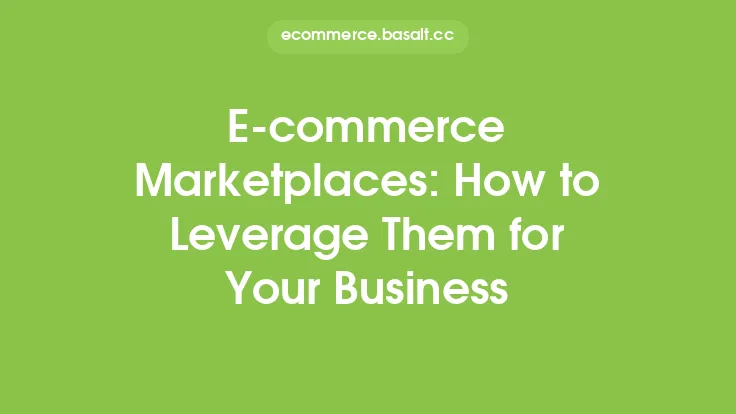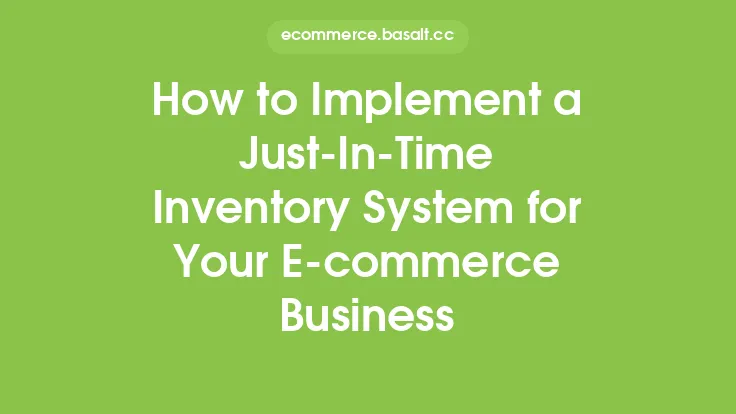When it comes to managing orders in an e-commerce business, having the right tools and systems in place is crucial for efficiency, accuracy, and customer satisfaction. An Order Management System (OMS) is a vital component of any e-commerce operation, as it enables businesses to streamline their order processing, inventory management, and fulfillment processes. However, with so many different OMS options available, choosing the right one for your business can be a daunting task. In this article, we will explore the key considerations and factors to take into account when selecting an OMS for your e-commerce business.
Evaluating Your Business Needs
Before starting your search for an OMS, it's essential to evaluate your business needs and requirements. Consider the size and complexity of your operation, as well as your future growth plans. Think about the types of products you sell, your sales channels, and your customer base. Do you sell physical or digital products? Do you operate on multiple sales channels, such as online marketplaces, social media, or your own website? Do you have a large customer base with complex ordering requirements? Answering these questions will help you determine the features and functionality you need from an OMS.
Assessing OMS Functionality
When assessing OMS functionality, there are several key areas to consider. First, look at the system's order processing capabilities. Can it handle high volumes of orders efficiently? Are there automated workflows and rules-based processing to minimize manual intervention? Next, consider the system's inventory management features. Can it track inventory levels in real-time, across multiple warehouses and sales channels? Are there features for inventory forecasting, replenishment, and optimization? Additionally, think about the system's fulfillment capabilities. Can it integrate with multiple shipping carriers and providers? Are there features for automated shipping label generation, tracking, and updates?
Integration and Compatibility
Another critical factor to consider when choosing an OMS is integration and compatibility. Can the system integrate with your existing e-commerce platform, accounting software, and other business systems? Are there pre-built integrations with popular platforms, such as Shopify, Magento, or BigCommerce? Consider the system's API and data exchange capabilities. Can it support real-time data synchronization, or are there batch processing limitations? Additionally, think about the system's compatibility with different operating systems, browsers, and devices. Can it be accessed and used on-the-go, or is it limited to desktop use?
Scalability and Flexibility
As your business grows and evolves, your OMS needs to be able to scale and adapt with it. Look for a system that is flexible and configurable, with customizable workflows, rules, and processes. Can the system handle increased order volumes, new sales channels, and expanded product lines? Are there features for scalability, such as load balancing, caching, and content delivery networks? Consider the system's architecture and infrastructure. Is it built on a cloud-based platform, or is it an on-premise solution? Are there options for hybrid or multi-cloud deployments?
Security and Compliance
Security and compliance are critical considerations when choosing an OMS. Look for a system that has robust security features, such as encryption, access controls, and authentication. Are there features for secure payment processing, such as PCI-DSS compliance? Consider the system's compliance with industry regulations, such as GDPR, HIPAA, and SOX. Are there features for audit logging, tracking, and reporting? Think about the system's vulnerability management and patching processes. Are there regular security updates, and is the system protected against common web attacks?
Support and Services
Finally, consider the level of support and services provided by the OMS vendor. Are there multiple support channels, such as phone, email, and live chat? Are there resources for training, documentation, and knowledge bases? Consider the vendor's reputation, reviews, and ratings. Are there case studies, testimonials, and references from existing customers? Think about the vendor's roadmap and vision for the product. Are there regular updates, new features, and enhancements? Are there options for customization, consulting, and professional services?
Conclusion
Choosing the right Order Management System for your e-commerce business is a critical decision that requires careful consideration of several key factors. By evaluating your business needs, assessing OMS functionality, considering integration and compatibility, scalability and flexibility, security and compliance, and support and services, you can make an informed decision that meets your business requirements. Remember to prioritize your business needs, and don't be afraid to ask questions, request demos, and trial different systems before making a final decision. With the right OMS in place, you can streamline your order processing, improve customer satisfaction, and drive business growth and success.





